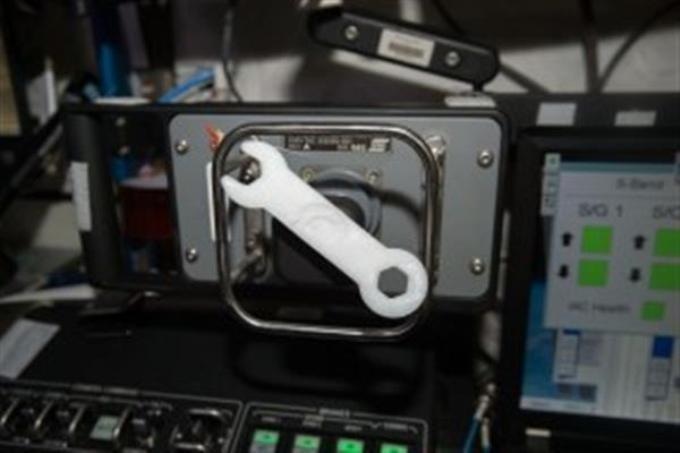Dec 1 2016
Thanks to a partnership between Made In Space and Braskem, astronauts on the International Space Station can now 3D print with “green plastic,” a material made from sugarcane. The first 3D printed part made using the material was a pipe connector for a vegetable irrigation system.
 Credit: http://www.3ders.org/
Credit: http://www.3ders.org/
Ever since the Additive Manufacturing Facility (AMF)—the first permanent 3D printer in space—was deployed aboard the International Space Station (ISS), parts have been 3D printed for both practical and promotional purposes. The printer is, first and foremost, a tool with which astronauts can fabricate objects without them having to be rocketed up from Earth; however, it is also being used as a (very) remote 3D print shop through which businesses, researchers, and individuals can have their digital files 3D printed in space. After all, who wouldn’t want that?
Since people are developing new applications for 3D printing in space virtually ever day, we hear an awful lot about what the AMF is being used for, but we don’t hear quite so much about the materials that go into the orbiting 3D printer. That aspect of the project, however, is half the fun, and many additive manufacturing enthusiasts have even speculated that regolith gathered on the Moon or even Mars could someday be used as a 3D printing material.
As a kind of 3D FDM printer, the AMF mainly uses ABS plastic, the material from which LEGO bricks are made, but a more exciting substance going into the ISS-deployed machine is green plastic, or GreenPE, a biobased resin that could effectively increase the autonomy of space missions. This type of green plastic (market name: “I’m green plastic”) came about through a partnership between Made In Space (creator of the AMF 3D printer) and Braskem, the largest thermoplastic resin producer in the Americas, and has already been used to fabricate objects aboard the ISS.
Green plastic, a polyethylene made from sugarcane, was chosen as a suitable space 3D printing material both because of its renewability and because of its desirable properties: flexibility, chemical resistance, and recyclability. The material will also print especially well on the AMF 3D printer, which Braskem had a part in making. The 3D printer’s print bed is made of Braskem’s ultra-high molecular weight polyethylene (UHMW-PE), which is marketed under the brand UTEC.
Green plastic, useful for much more than making watering cans for fake Chinese rubber plants, helps to reduce greenhouse gas emissions in the air by capturing carbon gas when it is produced. A recent Life Cycle Assessment (LCA) of green plastic showed that 2.78 tons of CO2 was removed for each ton of biobased resin produced.
Braskem’s Innovation & Technology team worked with Made In Space for more than a year to perfect the environmentally friendly green plastic material for 3D printing in zero gravity. Now, astronauts will be able to 3D print items on the AMF in the sugarcane-based material, saving huge amounts of time and money when compared to ordering parts in the traditional way—via payloads on future launches.
“Through this partnership, we combined one of the greatest innovations in polymers, green plastic, with advanced space technology to print 3D objects in zero gravity,” said Patrick Teyssonneyre, director of Innovation & Technology at Braskem. “Putting a renewable polymer in space for printing applications represents an important milestone in our history.”
According to Made In Space, the first item to be 3D printed in space using green plastic was a special pipe connector, whose files were beamed up to the AMF from Earth and 3D printed on the ISS. Fittingly, the green plastic pipe was needed for a vegetable irrigation system, which was itself made using the AMF.
“The ability to print parts and tools in 3D on demand increases the reliability and safety of space missions,” added said Andrew Rush, CEO of Made In Space. “This partnership with Braskem is fundamental for diversifying the raw materials used by the AMF and for making this technology more robust and versatile.”